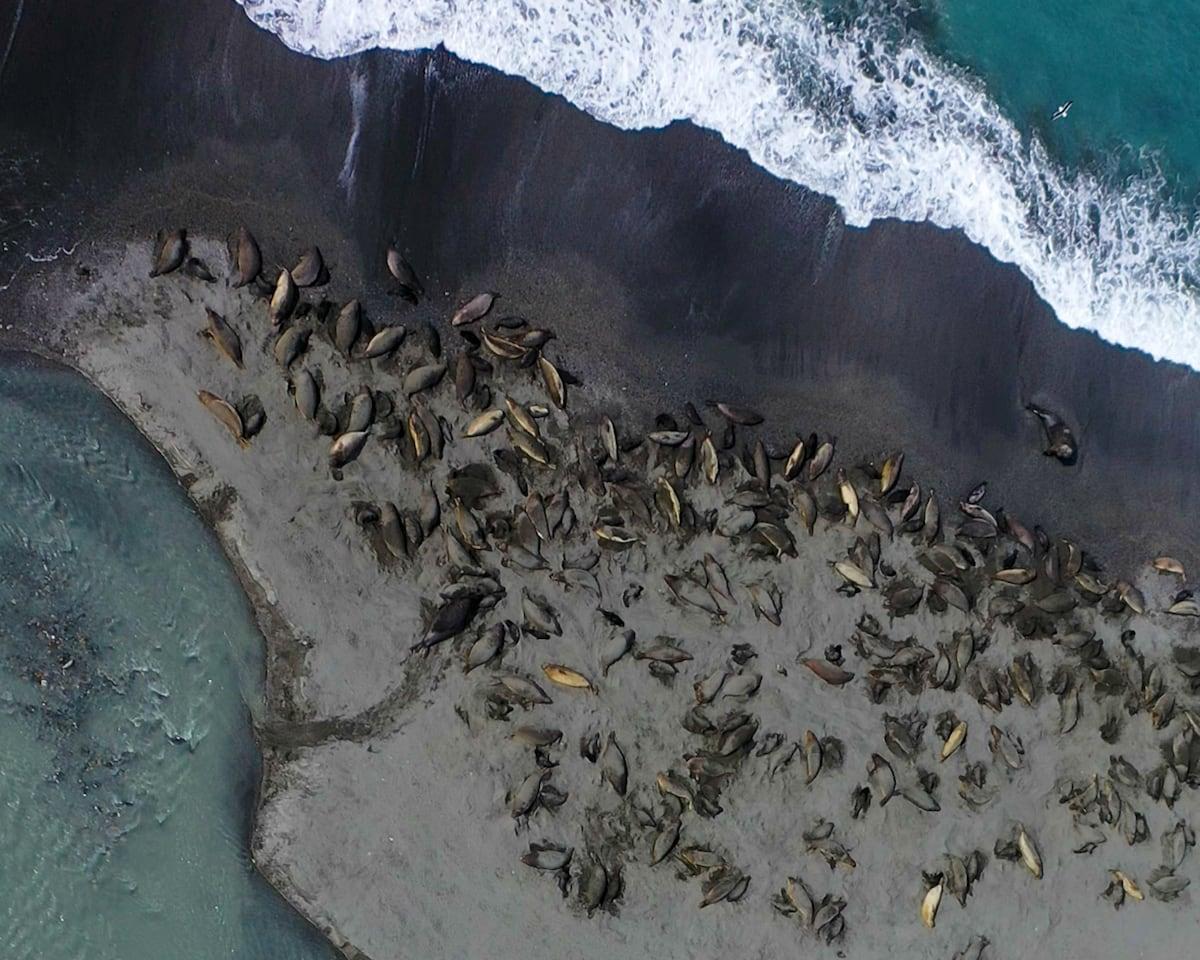British Antarctic Service with more than 50,000 specimens disappearing from the beach, after jumping virus from birds: "It's scary"
Avian flu has devastated the world's largest population of elephant seals: half of the females have disappeared
British Antarctic Survey estimates more than 50,000 birds missing from beaches after sudden spike in bird virus: 'It's shocking'
The deadliest bird flu virus in history, responsible for the deaths of hundreds of millions of birds in the past five years, is occurring in the remote islands of South Georgia, which is located on the UK mainland and 1,500 kilometers from the Antarctic continent.It's scary," warned Lean Connor Bamford, head of research.
The virus' journey would have begun in 1996, on a goose farm in Sanshui, in southern China, a humid region infested with poultry farms: the ideal breeding ground for new pathogens to emerge.After several waves of lower intensity, a new version of the virus, called 2.3.4.4b, emerged in 2020 and began traveling across the Americas from north to south, with a mortality rate never seen before.The highly pathogenic bird flu killed or forced the slaughter of almost 150 million birds in 84 countries in 2022 alone, according to data from the World Organization for Animal Health.On September 16, 2023, a group of British scientists came across a specimen of the giant Antarctic petrel – a bird with a wingspan of two meters – that was unable to move, on Bird Island, near South Georgia.The pest had just arrived at the gates of Antarctica, the last virgin continent on the planet.
Mammals failed in two children from a pair of virlogins.Until the last two years, the last number is at least 700,000 Smachi Smachi Credit.
Spanish virologist Antonio Alcami led two expeditions in 2024 and 2025 to measure the impact of bird flu in Antarctica.Earlier this year, scientists explored the coast of the Antarctic Peninsula, the region of Antarctica closest to South America, aboard a sailing ship converted into a laboratory.The virus was already ubiquitous, infecting one in four animals analyzed in nearly every location visited.Penguins were more resistant than feared, but the pathogen preys on other birds, including skuas.Two journalists from EL PAÍS accompanied the Spanish expedition, documenting for the first time the devastation of bird flu in Antarctica.
“Just because we don’t see the carcasses of marine mammals doesn’t mean they don’t die, because they probably die in the ocean where we can’t see them.”Alkami captained the treacherous Antarctic waters from the deck of his boat.Now he warns that halving the number of females in just one year is a "very large number", especially in a species where individuals weighing up to four tonnes can live for more than 20 years under normal conditions.“This is a huge impact, especially considering that 50% of the breeding population is in South Georgia,” warns a virologist from the Supreme Council for Scientific Research (CSIC).The new paper was published Thursday in the professional journal Communications Biology.
Alkami lamented the lack of support for analyzing the impact of avian influenza in Antarctica."There are concerns that the effects on other marine mammal species may be similar, but we have no information about what is happening," he lamented.In addition to logistical support from the CSIC Antarctic base, which is financially supported by the Ministry of Science, its mission has received €300,000 in funding from a Spanish consortium of insurance and reinsurance companies.Years are possible.This year, he couldn't find the funding to continue his research."It's a little disappointing," he said.
Veterinarian Ralf Wintrells, son of a Spanish woman and a Belgian man, was the most gruesome sight on the island, on the peninsula, on a beach in Argentina in October 2023.The sand is covered with dying or already dead bodies, making it difficult for an elephant to walk on the path.He and his colleagues said the virus killed 17,000 people within weeks, including 95 percent of their offspring.A new study in South Georgia is very worrying because it shows that it is similar to what happened in Argentina.It has a very serious effect.
Analysis of the outbreak in Argentina pointed to a troubling possibility: The virus was not only jumping from birds, but also spreading from elephant seals to elephant seals.Following the outbreak of bird flu in October 2022 at a mink farm in Galicia, British Dr. Jeremy Farrar, scientific director of the World Health Organization, warned that the emergence of such an infectious and deadly bird flu virus in mammalian populations is a scenario that health experts greatly fear. It is beginning to spread among animals. Human beings.
Howial holo Olad Bamford confirmed that the pathogen is still present in elephant seals.His colleagues are reading the genetic material of the virus from various animals to try to find out what transit the island is and how it mutates.Females, such as some local climate anomalies, but emphasize the natural variation from one year to the next 10%, not 50%, he said.
Elephant seals are divided into two species. Most of them are in the south, and a minority in the northern hemisphere, which is currently only slightly affected by the virus.Biologist Michelle Wille manages the avian flu database for the Scientific Committee for Antarctic Research, an international organization that coordinates Antarctic science. "Highly pathogenic bird flu has wreaked havoc on southern elephant seals," he said. "These mortality rates are alarming. But it's not surprising. Because we've seen similar numbers in many bird species. The impact is very significant," continued Wille of the University of Melbourne in Australia.will remain".
Your subscription is being used on another device
Want to add another user to your subscription?
If you continue to read on one device, the other will not.
Arrowour's subscription is being used on another device and you can only log in from one device at a time.
If you want to share your account, change your subscription to Premium mode, so you can add another user.Everyone has access to their own email account, allowing you to personalize your El País experience.
Do you have a business membership?Go here to sign up for more accounts.
If you do not know who uses your account, we recommend changing your password here.
If you decide to continue sharing your account, this message will appear on your device and on the devices of others using your account indefinitely, affecting your reading experience.You can view the digital subscription terms and conditions here.








